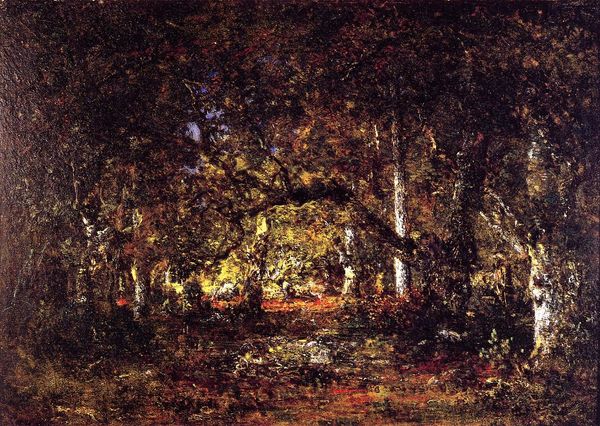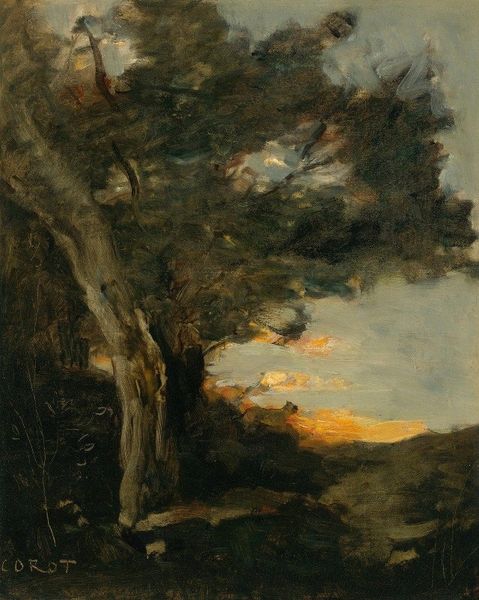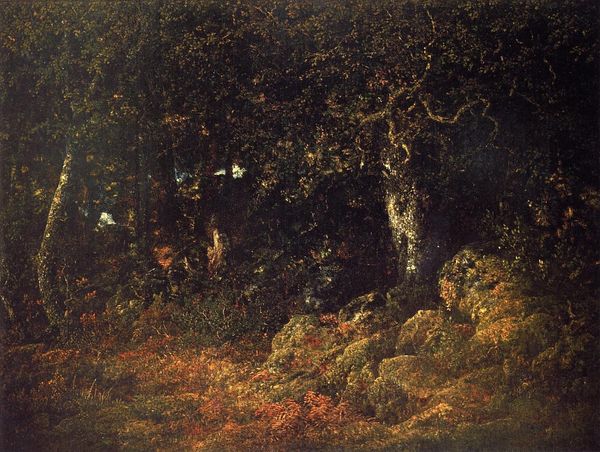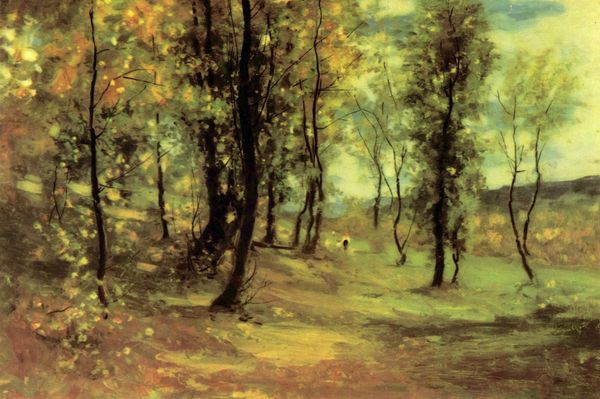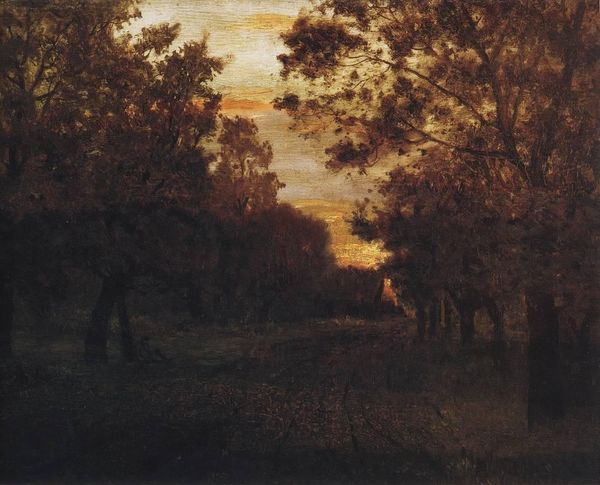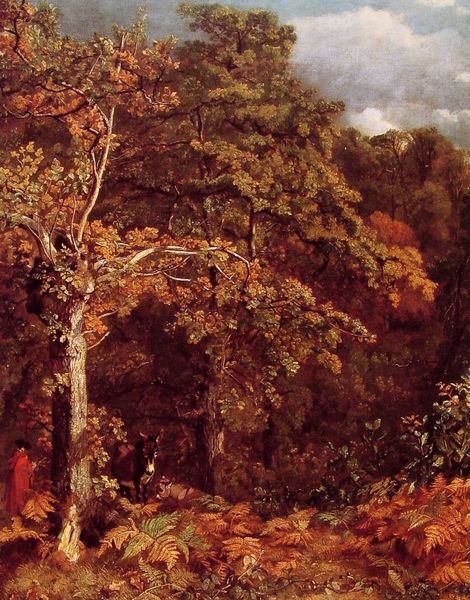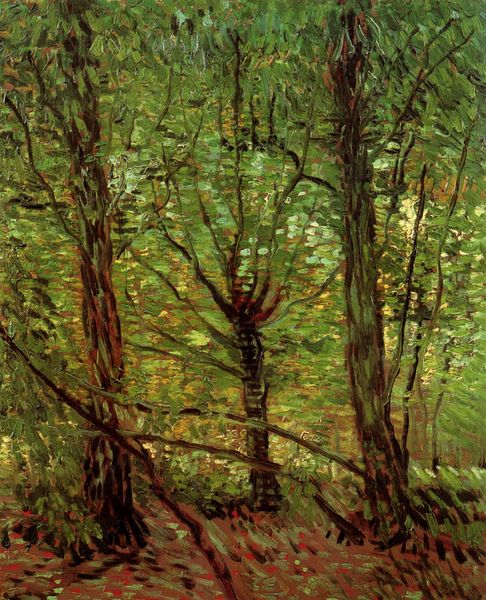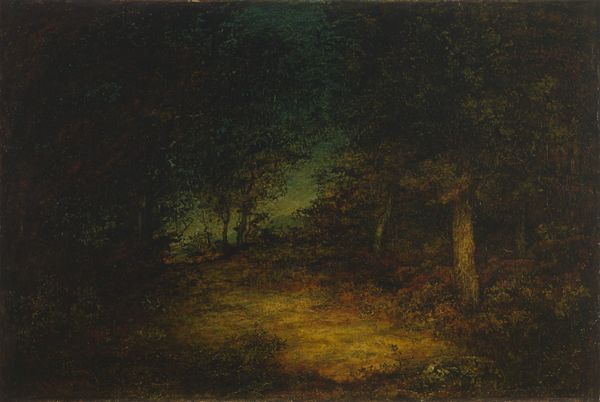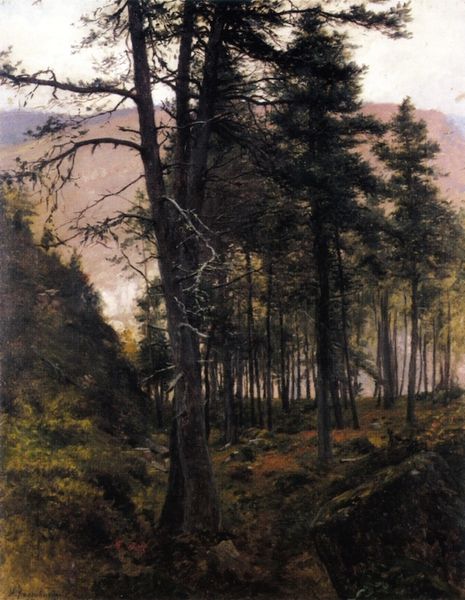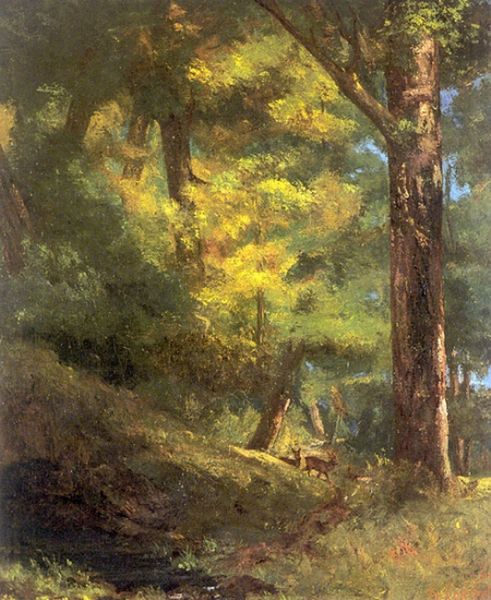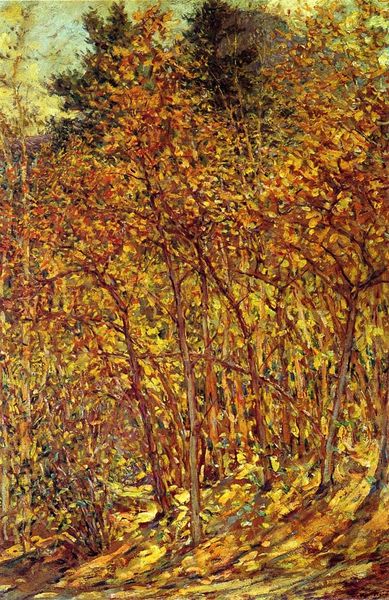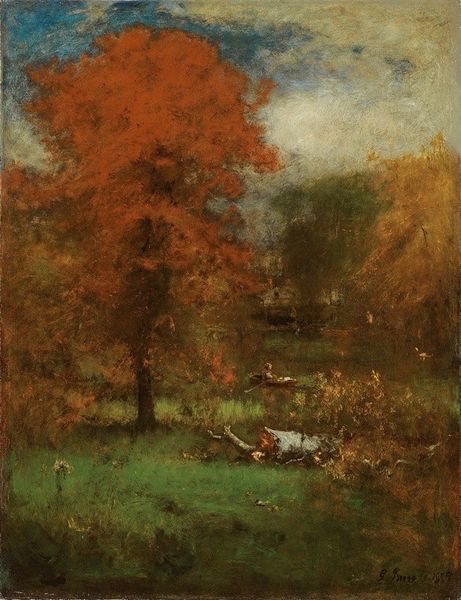
Fall at the Jean-du-Paris, in the Forest of Fontainebleau 1846
0:00
0:00
painting, plein-air, oil-paint
#
tree
#
sky
#
painting
#
plein-air
#
oil-paint
#
landscape
#
leaf
#
forest
#
abstract nature shot
#
romanticism
#
natural-landscape
#
paint stroke
#
men
#
cityscape
#
nature
Copyright: Public domain
Curator: As we contemplate Théodore Rousseau's "Fall at the Jean-du-Paris, in the Forest of Fontainebleau" from 1846, now housed here at the Minneapolis Institute of Art, one is struck by the romantic undertones in this natural landscape. Editor: My first impression is how tactile it appears. Look at that heavy impasto! It seems almost as though you could reach out and feel the individual leaves and branches. Curator: It's remarkable how Rousseau’s plein-air painting captures a pivotal time in French history— a pre-industrial, almost untouched world of Fontainebleau, prior to rapid urbanization. What social and political anxieties were shaping perceptions of nature then? Editor: And it’s not just capturing; it’s constructing an experience. He layers the paint to mimic the density of the forest. The physical process mirrors the reality. There are tiny figures there, could they be involved with logging in the area? Curator: Those figures certainly invite questions. Were these ordinary wood gatherers, or rather emblematic figures within a quickly changing countryside? What might Rousseau be saying regarding access and preservation with the looming presence of urbanization? Editor: Interesting point, access. This wasn't wilderness; the forest was managed and worked. These colors, this richness, this careful layering of material suggests an awareness of the value – not just aesthetic, but also economic – embedded within this environment. Curator: I see your point, and those layers of paint could indeed signify something about labor but it also invites another reading on the significance of nature. Through the artistic interpretation we might understand not just the physical but the symbolic wealth of the landscape in the midst of transformation and modernization. What dialogues are we able to create today given current global socio-economic transformations? Editor: Precisely. We are drawn into considering both the raw materials and labor—a landscape pregnant with both the physical and symbolic realities of Rousseau's world, but mirrored onto our present, in new ways. Curator: This artwork gives us room for thought concerning material and metaphorical richness; about human labor as well as the weight of preservation across time and social strata. Editor: And, as someone mindful of material things, that texture really grabs you, doesn't it? The touch and materiality draws our awareness back towards lived experiences of production and transformation, through which, the very meanings of nature and human labor are still continuously re-negotiated.
Comments
No comments
Be the first to comment and join the conversation on the ultimate creative platform.
